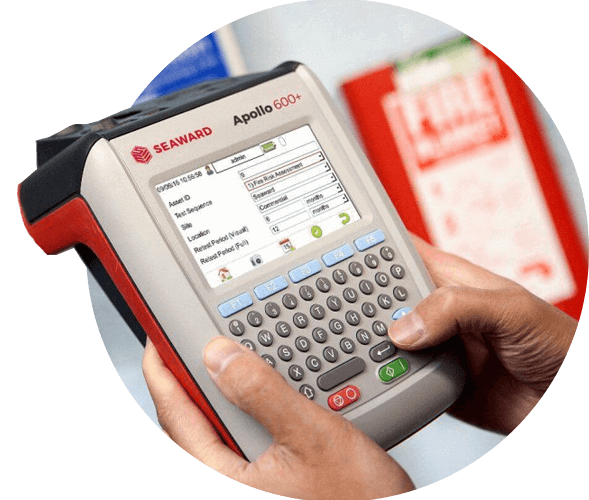Portable Appliance Testing (PAT) is the term used to describe the inspection of electrical equipment and appliances for the purpose of ensuring they are safe to use. Many safety defects can be found through visual examination of the electrical appliance; however some issues can only be detected with testing.
What Is Portable Appliance Testing (PAT)?
Portable Appliance Testing is a term used to describe the procedure of safety testing electrical appliances in order to keep workers or tenants who come into contact with them free from risk.
PAT is a process of checking the safety of electrical equipment already in service, or being placed into service for the first time. It runs in conjunction with other preventative maintenance measures preventing danger to users from fire or electrical shock. PAT forms a component of a far broader health and safety policy.
Why Is Portable Appliance Testing Conducted?
A great way of ensuring your electrical equipment is fit for purpose and safe for those using it, is through portable appliance testing. In-service inspection and testing is a way in which employers, landlords and businesses can meet legal obligations of maintaining their electrical appliances to a high safety standard.
Portable Appliance Testing, as part of a regular preventative maintenance program, aids in minimising the risk of electrical fires and electric shock damage to those using electrical equipment.
How Is PAT Testing Done?
The PAT process consists of a thorough visual inspection, often revealing the majority of faults, along with electrical safety tests. Appliances are categorised into three main categories: class one, class two and class three. The class the appliances fall into will assist in determining whether the appliance needs testing, and to what extent it must be tested.
The minimum requirements for class one equipment (which is usually earthed) is to carry out a visual inspection, earth continuity test and insulation resistance test. Class two equipment (which have no protective earth) require a visual inspection and insulation resistance test. All testing should be recorded, with risk assessments carried out to determine the appropriate schedule for re-testing. Class three may be required where increased levels of protection against electrical shock is needed and is designed with safety in mind – offering protection levels above and beyond that required of class one and two equipment.
What Sort Of Appliances Are Tested?
The electrical category and class of the appliance are the two main factors specific to the requirement for Portable Appliance Testing. Electrical testing should always be carried out in accordance with the designated appliance classes. This applies to electrical equipment supplied at voltages up to and including 1000V AC or 1500V DC between conductors, or 600V AC or 900V DC between conductors and earth.
There are seven main categories of appliances which require testing, including:
- Fixed appliances
- Stationary appliances
- IT appliances
- Moveable appliances
- Portable appliances
- Cables and chargers
- Hand held appliances
Items such as kettles, monitors, electric drills and PCs are suitable for PAT testing. You should be aware that electrical appliances fall under classes one, two or three. Below is a breakdown of some common items in each class. If you’re unsure about the testing requirements of your appliances, contact your electrical contractor for assistance.
Examples Of Class 1 Appliances
- Desktop computers
- Photocopiers
- Microwaves
- Fridges
Examples Of Class 2 Appliances
- Hedge trimmers
- Lawnmowers
- Televisions
- Drills
Examples Of Class 3 Appliances Include:
- Mobile phone chargers
- Cameras
- Torches
- Laptops
Legal Requirements In Western Australia
AS/NZS 3760:2022 refers to the Australian Safety Standards specific to the inspection and maintenance of electrical devices and appliances. For most, AS/NZS 3760:2022 is about testing and tagging portable electrical appliances, in addition to machinery connected to flexible cords, or any kind of appliances, tools or equipment no matter their condition as long as they exist in workplaces.
Inspecting, testing and tagging intervals range from monthly to five-yearly, according to a range of factors. The testing of Residual Current Devices (RCDs) is also included under the AS/NZS 3760:2022 standard.
Gorey Electrical Can Assist With All Your Portable Appliance Testing Needs
As a family owned and operated business, we know the importance of preventing injuries and the risk of electric shock and workplace fires. By keeping up to date with the latest Australian testing standards, the qualified team of technicians at Gorey Electrical provide safety testing services with our portable appliance testers, meeting the safety testing requirements of all companies and organisations. Periodic in-service testing of electrical equipment and appliances is of the utmost importance within the workplace. Our colour-coded tags, documented testing procedures and comprehensive test reports outline the testing intervals of your equipment, ensuring compliance while minimising the occurrence of electrical faults, electrical shock and fires. Through the detection of potential safety issues with your electrical equipment before they occur, Gorey Electrical Service can help keep your business and staff safe. Get in touch today!

